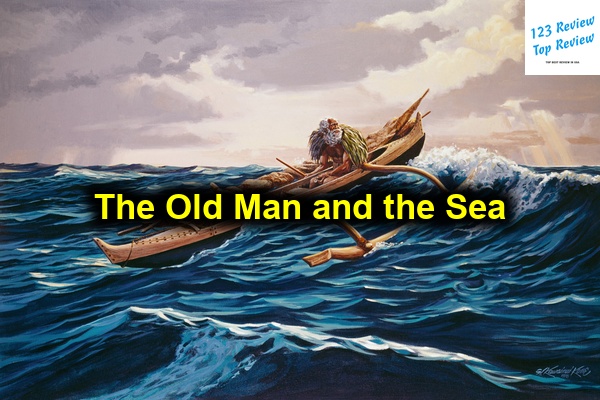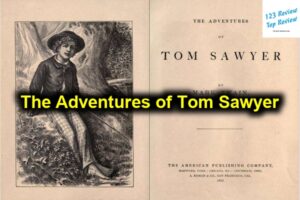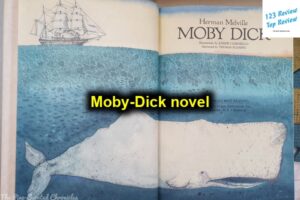Originally appearing in Life magazine prior to its full publication, the novella received widespread acclaim and is often regarded as a culmination of Hemingway’s literary career. This work not only marked a remarkable comeback for Hemingway, who had faced a decline in his literary reputation, but it also played a significant role in securing him the Nobel Prize in Literature in 1954. The novella’s succinct storytelling and deep philosophical undercurrents resonate with readers, offering a poignant exploration of life’s struggles and the human spirit’s resilience.
Context of Hemingway’s Work
Publication History and Impact
Ernest Hemingway’s novella “The Old Man and the Sea” was first published in Life magazine on September 1, 1952, before its full release on September 4 of the same year. This was a significant moment in the literary world, as it introduced a work that would become emblematic of Hemingway’s legacy and signal a resurgence in his career. The novella was received with tremendous acclaim, not only for its craftsmanship but also for its profound themes and elegant portrayal of a protagonist’s struggle against the natural elements.

Historically, the 1950s was a time of shifting literary trends. The post-World War II landscape saw a departure from the grand narratives of earlier literature towards more introspective and existential themes. Literary movements such as existentialism were gaining traction through the works of authors like Jean-Paul Sartre and Albert Camus. In this context, Hemingway’s return to a more succinct, classic style in “The Old Man and the Sea” offered a refreshing contrast. The novella harked back to the heroic narratives reminiscent of classical literature, drawing upon deep human emotions and a poignant understanding of the struggle for survival.
The publication of “The Old Man and the Sea” marked a pivotal moment in Hemingway’s life. After facing some period of decline, this work revitalized his reputation. Its success led to Hemingway being awarded the prestigious Nobel Prize in Literature in 1954. The committee recognized the novella not merely as a narrative about an old man’s struggle with a marlin, but as a profound meditation on the challenges of human existence and the dignity that accompanies the battle against overwhelming odds.
Over the last seven decades, the impact of “The Old Man and the Sea” has only grown. It is frequently included in high school and university curricula, often appearing on reading lists for courses in American literature, existentialism, and psychological studies. The novella’s exploration of themes pertaining to masculinity, resilience, and the struggle against nature resonates deeply in a wide array of cultural conversations, ensuring its continued relevance in contemporary literary discourse.
Hemingway’s Life and Its Reflection in the Novel
Understanding Hemingway’s life is crucial to grasping the themes and characterizations in “The Old Man and the Sea.” Born on July 21, 1899, in Oak Park, Illinois, Hemingway was shaped by a mix of privilege and inner turmoil. His early life experiences—ranging from a turbulent childhood to a career as an ambulance driver during World War I—infused his work with themes of bravery, existential struggle, and the impact of war on personal identity. Hemingway became known for his adventurous lifestyle, which included a passion for big-game hunting, deep-sea fishing, and bullfighting. These experiences heavily influenced his writing, centering on themes of masculinity, the wildness of nature, and the elements of existential crisis.
Hemingway’s love for fishing, particularly in the Gulf Stream off the coast of Cuba, served as the backdrop for “The Old Man and the Sea.” It was during his time in Cuba that he began writing the novella, pouring his reflections, experiences, and contemplations into the character of Santiago, the old fisherman. Santiago’s profound respect for the ocean mirrors Hemingway’s own relationships with nature, revealing an intimate understanding of the sea’s beauty and brutality.
The character of Santiago is perhaps best understood through the lens of Hemingway’s struggles with aging, mental health, and the quest for artistic meaning. As a man in his late 50s, facing a decline in his physical capabilities and reputation, Hemingway identified closely with the old man’s plight. Santiago’s battles in the sea evoke the author’s own battles against depression, societal expectations, and the pressures of maintaining relevance in a changing literary landscape. This personal connection imbues the text with a layer of authenticity that resonates deeply with readers, allowing for varied interpretations centered on struggle, resilience, and the human condition.
Character Analysis
Santiago: The Protagonist’s Journey
Santiago, the titular old man, is a character of immense depth and complexity. He lives a life defined by routine and dedication, embodying both the trials and the fortitude of the human spirit. An indefatigable fisherman who has gone eighty-four days without a catch, Santiago is portrayed at the brink of despair yet remains resolute and tenacious—a true embodiment of perseverance. His character draws upon archetypal themes of the heroic journey, evoking a sense of admiration despite his age and ill fortune.
Santiago’s physicality is a crucial component of his characterization. He is described as gaunt and weathered, bearing the marks of his laborious life. His hands are “the hands of a man who has been at sea for too long,” signifying both his struggles and his enduring connection to fishing. This portrayal of weariness is more than an indication of age; it represents the constant strain of life’s hardships. Hemingway uses Santiago to explore the idea that even in the throes of defeat, dignity remains intact through resilience.
Santiago’s journey is not merely a physical battle against the marlin but also an internal struggle rife with philosophical inquiry. He often engages in introspection, contemplating his relationship with nature, his past achievements, and his sense of self-worth. The ocean is a living entity for him, reflecting his existence, dreams, and vulnerabilities. His relationship with the sea symbolizes the broader human struggle against the forces of nature and fate.
As Santiago confronts the marlin, his determination and respect for the fish highlight a nuanced relationship with nature—it is both an adversary and an object of admiration. The struggle to capture the fish becomes a metaphor for Santiago’s desire to prove his worth, both to himself and to a world that seems to have abandoned him. Through this profound struggle, Hemingway illustrates what it means to fight against overwhelming odds, emphasizing that the journey itself defines one’s character, regardless of the outcome.
Manolin: The Symbol of Hope and Loyalty
In stark contrast to the solitary figure of Santiago is Manolin, a young boy who represents hope, loyalty, and the continuation of life. As Santiago’s devoted apprentice, Manolin embodies youthful exuberance and unwavering dedication. Though his parents have urged him to fish with the more successful boats, Manolin remains fiercely loyal to Santiago. This relationship highlights the significance of mentorship and kinship, weaving the theme of intergenerational bonds throughout the narrative.
Manolin’s character serves as a crucial supporting figure, grounding Santiago and providing a sense of purpose. Through their interactions, Hemingway portrays the dynamics of friendship, emphasizing the importance of human connection amidst struggle. The boy’s laughter and enthusiasm bring warmth into Santiago’s otherwise lonely existence, illustrating the transformative power of close relationships.
Manolin looks up to Santiago not only as a mentor but also as a father figure, yearning for his approval and wisdom. This dynamic showcases the depth of their bond, characterized by love, respect, and mutual admiration. Their relationship reinforces the idea that it is through mentorship and teaching that individuals can pass on their knowledge, underscoring themes of legacy and continuity within human experience.
Through Manolin’s eyes, readers see Santiago not just as a defeated fisherman but as a heroic figure—a man of great strength and resilience. Manolin symbolizes the next generation, one that carries forward the lessons learned and the values instilled by elder figures. His unwavering support reminds readers of the interconnectedness of human experiences and the role individuals play in encouraging one another in times of struggle.
Antagonists: Nature and Sharks
In “The Old Man and the Sea,” the primary antagonists extend beyond typical rivals; nature itself emerges as the most formidable opponent. Santiago’s struggle with the marlin and subsequent encounters with sharks serve to illustrate a broader commentary on the human condition and our constant battle against the elements. While the marlin represents an honorably fought battle, the sharks symbolize the darker forces that seek to undermine and destroy one’s efforts.
Santiago’s relationship with the marlin is multifaceted; it is one of competition as well as reverence. The marlin is not merely a fish to catch to prove his worth—it is a noble creature that embodies the very essence of Santiago’s struggle. This relationship transcends the bounds of predator and prey, evolving into a mutual recognition of strength and beauty. Each day that Santiago spends battling the marlin enhances their bond, highlighting the size of the challenge ahead and underscoring the respect he has for what he seeks to achieve.
Conversely, the sharks that attack Santiago’s hard-won prize become a metaphor for the relentless obstacles that threaten to cut down human ambition. After finally securing the marlin, Santiago faces the harsh reality that external forces would seek to diminish his victory—both literally and metaphorically. As he battles the sharks, readers witness the duality of triumph and defeat, a poignant representation of how success can often be accompanied by inevitable loss. Hemingway thus illustrates that the struggles inherent in life are manifold, defined not only by personal ambition but also by external challenges that seek to thwart those efforts.
The fierce battle against the sharks contextually symbolizes a broader commentary on the human condition: the fragility of success in the face of adversity and the persistence of failure. Santiago’s fight against these sharks represents a universal truth about life: having achieved something meaningful does not guarantee that it will be preserved. This struggle against nature highlights the transient nature of victory, reminding readers that the world is rife with challenges that often elude human control.
Themes Explored
Perseverance Against Adversity
One of the most central themes within “The Old Man and the Sea” is the exploration of perseverance in the face of adversity. Santiago’s relentless fight against the marlin, regardless of pain or exhaustion, illustrates the quintessential struggle of the human spirit. This theme of determination resonates deeply with audiences, reinforcing the idea that true victory is not determined by success alone but rather by the effort and endurance invested in the struggle.
Hemingway crafts Santiago as a character who embodies the resilience of age, illustrated through his internal monologues and reflections. Phrases like “A man can be destroyed but not defeated” capture the essence of this theme, driving home the message that the act of striving itself bestows dignity upon an individual. Santiago’s unwavering refusal to surrender illustrates that true strength lies in the courage to confront challenges, regardless of their magnitude.
The relentless pursuit of the marlin becomes a metaphor for life’s broader challenges. Santiago is acutely aware of his limitations, yet he presses on with tenacity and determination. This exploration of human perseverance transcends the specifics of fishing, speaking to universal challenges that individuals face—be it in personal fulfillment, professional aspirations, or existential quests for meaning. As readers accompany Santiago on his arduous journey, they are reminded of their own struggles and the undying spirit necessary to navigate through life’s hardships.
The Concept of Pride in Fishing
Pride emerges as another fundamental theme in “The Old Man and the Sea,” particularly in relation to Santiago’s identity as a fisherman. For Santiago, fishing is not merely a means of survival; it is an art form imbued with skill, tradition, and deep respect for the ocean. His pride reflects a broader commentary on the human connection to one’s work and the significance of craft in an individual’s sense of self.
Santiago exercises great reverence for the marlin, viewing it as a worthy adversary and embodying the ideals of honor and integrity. He laments the need to kill the fish, showing a deep respect for its beauty and strength. The pride Santiago feels stems not only from the act of fishing but also from his commitment to its traditions and the values associated with it. Throughout the novella, Hemingway illustrates how pride can serve as a driving force, motivating individuals to strive for greatness even in the face of adversity.
Moreover, Santiago’s pride in his craft serves to heighten the emotional stakes of his struggle. His determination to prove himself against the mighty marlin symbolizes a quest for validation in a world that has all but forgotten him. Through this lens, Hemingway portrays pride as a double-edged sword—while it can inspire and motivate, it can also lead to isolation and loneliness when left unchecked. The balance between pride and humility becomes a critical exploration as Santiago navigates his quest, reminding readers that pride can connect, uplift, and isolate in equal measure.
Friendship and Mentorship
The theme of friendship and mentorship is fundamentally woven into the fabric of “The Old Man and the Sea,” exemplified through the relationship between Santiago and Manolin. Unlike the solitude of Santiago’s struggle against the sea, the bond with the boy encapsulates the warmth and connection that characterizes human relationships. Manolin serves as a symbol of hope and renewal, reflecting the cycles of mentorship and growth that are intrinsic to the human experience.
Santiago encourages Manolin’s growth as a fisherman, instilling in him the values of perseverance, respect, and integrity. This mentorship underscores the importance of nurturing future generations and guiding them through the trials of life. Despite societal pressures that compel Manolin to abandon Santiago, the boy’s unwavering loyalty signifies a commitment to their relationship, illustrating that true friendship can withstand external forces and societal expectations.
Their dynamic offers a stark contrast to Santiago’s solitary journey. While Santiago battles the marlin, Manolin symbolizes the interconnectedness of life and the importance of relationships. The boy’s laughter, encouragement, and admiration for Santiago highlight the joys brought forth from companionship, serving as a vital source of motivation for the old man to persevere against insurmountable odds.
Through the exploration of this theme, Hemingway emphasizes the enriching power of friendship and mentorship. The closeness between Santiago and Manolin resonates deeply with readers, reminding them that in the struggle for identity and purpose, the support of others can be a guiding light. Their relationship encapsulates the essence of human connection: celebrating victories and navigating through losses together.
Literary Techniques
Use of Symbolism in the Narrative
Hemingway’s use of symbolism is integral to the depth of “The Old Man and the Sea,” enriching the narrative with layers of meaning and interpretation. Key elements of the novella carry significant symbolic weight, inviting readers to reflect on broader themes of struggle, resilience, and humanity.
The marlin, for instance, symbolizes Santiago’s greatest challenge and ultimate aspiration. It embodies not only the struggle for triumph but also the respect for the natural world and its creatures. Santiago’s battle with the marlin represents the universal human quest for meaning, illustrating the idea that one must confront adversity head-on to achieve greatness. The fish’s strength and beauty highlight the dignity inherent in struggle, illustrating that the journey toward success can be just as meaningful as the end goal.
The ocean, too, serves as a powerful symbol within the novella. It represents both freedom and isolation, mirroring the duality of human existence. The sea is a place of sustenance and adventure, yet it is also an abyss teeming with dangers and uncertainties. Santiago’s intimate relationship with the ocean reflects his own internal conflicts—his love for the sea is juxtaposed with the loneliness it embodies. This duality encapsulates the complexities of life itself, where joy and suffering coalesce.
The sharks that threaten Santiago’s hard-won marlin symbolize the destructive forces that challenge human achievement. Their relentless attacks represent the numerous obstacles that seek to undermine persistence and triumph. Through this symbolism, Hemingway not only highlights the fragility of success but also speaks to the inevitability of loss—an integral part of human experience.
Hemingway’s Unique Writing Style
Hemingway’s writing style in “The Old Man and the Sea” is characterized by its simplicity, precision, and emotional depth. Utilizing the “Iceberg Theory,” also known as the theory of omission, Hemingway crafts a narrative where much of the meaning lies beneath the surface. This approach invites readers into a deeper exploration of the text, compelling them to draw their own interpretations from the explicit events depicted.
The use of concise and declarative sentences further underscores the weight of Santiago’s journey. Hemingway’s language is stripped down to its essence, creating a stark vibrancy that evokes the struggle between man and nature. This economy of language amplifies the emotional resonance of the narrative, allowing readers to engage with Santiago’s internal battles on a profound level. Every word carries significance, emphasizing the gravity of his character’s journey.
Moreover, Hemingway’s deliberate pacing builds tension, mirroring the rhythm of the ocean and the unpredictability of Santiago’s struggle. As Santiago battles the marlin over several days, the narrative unfolds slowly, revealing the intricate layers of the protagonist’s thoughts and emotions. This pacing draws readers into the heart of Santiago’s journey, fostering a sense of empathy as they witness each moment of triumph and despair.
Stream of Consciousness Technique
While Hemingway is often associated with a minimalist style, he also incorporates aspects of the stream of consciousness technique, particularly during Santiago’s introspective moments. This technique allows readers to access Santiago’s innermost thoughts and emotional landscape, enhancing their connection to the character.
As Santiago reflects on his life, his thoughts flow organically, revealing his vulnerabilities and aspirations. These introspective passages provide insights into his struggles with identity, self-worth, and the impact of isolation. By delving into Santiago’s consciousness, Hemingway enriches the narrative, allowing readers to understand the nuances of the character’s experiences and emotions.
Through the stream of consciousness technique, Hemingway further elevates the central themes of the novella—conveying the weight of existential dilemmas and the quest for meaning amid the vastness of existence. Readers are invited to accompany Santiago on his internal journey, fostering a sense of shared experience and reflecting on their own encounters with adversity and triumph.
Critical Reception
Awards and Accolades
Upon its publication, “The Old Man and the Sea” met with widespread critical acclaim, solidifying Hemingway’s reputation as one of the most significant literary figures of his time. The novella’s rich themes, profound characterizations, and elegant prose captivated readers and critics alike. It was widely recognized as a masterful return to form for Hemingway, after a period in which he had produced less acclaimed works.
The novella’s success led to numerous accolades, most notably the Nobel Prize in Literature awarded to Hemingway in 1954. The Swedish Academy highlighted “The Old Man and the Sea” in their commendation, praising its deep exploration of human existence, struggle, and the dignity of the individual spirit. This recognition not only solidified Hemingway’s place in literary history but also ensured that the novella would be studied, interpreted, and revered for generations to come.
Over the years, “The Old Man and the Sea” has been a consistent presence in literary discussions, earning its place in the canon of American literature. It is frequently cited in academic works and critical essays, reflecting its enduring relevance in discussions around themes of masculinity, existentialism, and the nature of human struggle. It has confident billing as a staple in educational curricula, where students are encouraged to dissect its complex themes and literary techniques.
Critical Interpretations Over Time
As literary criticism evolves, interpretations of “The Old Man and the Sea” have also developed, reflecting changing cultural and societal contexts. Initially, the novella was often viewed through the lens of traditional masculinity—the heroic struggle of an old man against nature. Critics focused on Santiago’s resilience and bravery as emblematic of the male experience, often overlooking the text’s deeper explorations of loneliness, identity, and the human condition.
In more contemporary discourse, critiques of the work have shifted toward examining themes of existentialism, the fragility of success, and the ethical complexities of nature. The relationship between Santiago and the marlin is now seen as a broader metaphor for humanity’s place in the natural world and the consequences of individualism in the face of collective existence. Critics have also highlighted the environmental themes within the novella, urging readers to reflect on the implications of Santiago’s struggle against not only the marlin but also the sharks that threaten his triumph.
Additionally, discussions surrounding mental health and emotional resilience are increasingly prevalent in critiques of the novella. Santiago’s introspective reflections can be interpreted as a grappling with depression and the struggles inherent in the human experience, inspiring readers to consider dialogues around mental health, vulnerability, and masculinity. As society becomes more attuned to these discussions, “The Old Man and the Sea” remains a crucial work for exploration of these themes.
Scholarly works analyzing “The Old Man and the Sea” have proliferated since its publication, underscoring its enduring interest among critics and academics. The variety of interpretations reveals the complexity of Hemingway’s narrative, highlighting that while the surface may appear simple, the themes and human experiences embedded in the novella are multifaceted and rich with meaning.
Comparisons to Other Works
Similarities with Hemingway’s Other Novels
“The Old Man and the Sea” bears distinct thematic and stylistic affinities with other works by Hemingway, notably revolving around universal themes of struggle, identity, and resilience. Novels such as A Farewell to Arms and For Whom the Bell Tolls share the central exploration of individual versus greater forces—whether it be war, love, or nature.
In A Farewell to Arms, the existential journey of the protagonist, Lieutenant Frederic Henry, exemplifies human vulnerability in the midst of war. Just as Santiago confronts the challenges of nature, Frederic grapples with the chaos of conflict and its impacts on personal identity. The peril of facing insurmountable odds, the search for meaning in despair, and the inevitable losses reflect themes prominent in both narratives.
Similarly, For Whom the Bell Tolls explores the complexities of sacrifice, love, and belonging amid the turmoil of the Spanish Civil War. Like Santiago’s enduring struggle against nature, the characters in this novel navigate personal dilemmas while confronting existential threats. The richness of Hemingway’s portrayal of human experience—in terms of bravery, sacrifice, and perseverance—resonates both in “The Old Man and the Sea” and within his broader body of work.
In stark contrast to these narratives, “The Old Man and the Sea” stands out through its focus on an individual’s relationship with nature, thus presenting a more solitary, contemplative experience. While other works depict collective struggles against societal forces, Santiago’s solitary battle against the marlin presents a more intimate exploration of individual resilience and the human connection to the natural world. This singularity allows for a deeper reflection on personal identity and the essence of duty, as Santiago seeks not only to conquer the fish but also to reaffirm his place in the world.
Influence on Modern Literature
The resonance of “The Old Man and the Sea” extends far beyond Hemingway’s time, influencing generations of modern literature. The novella’s exploration of themes such as struggle, identity, and the human relationship with nature has inspired countless authors across various genres. Its emphasis on the intricacies of the human spirit, particularly in how individuals confront their challenges, has made it a foundational text in American literature.
Contemporary writers often draw upon Hemingway’s minimalist prose and rich symbolism, emulating his approach to explore complex emotions through simple language. The usage of the “Iceberg Theory” has been adopted by numerous authors, allowing for narrative interpretations that invite readers to engage actively with the text.
The character of Santiago continues to resonate with readers, serving as an archetype of the modern hero—a figure defined by struggle who embodies resilience against personal and external challenges. The simplicity and complexity of Santiago’s experience—his victories intertwined with inevitable losses—parallel the journeys of the protagonists in many contemporary works, illustrating that the themes of perseverance and dignity remain vital in modern storytelling.
Additionally, the environmental themes present in “The Old Man and the Sea” continue to permeate contemporary literature. As discussions around climate change and the human impact on nature intensify, the narrative’s portrayal of Santiago’s connection with the ocean as both sustenance and adversary serves as a critical reflection on our relationship with the environment. Modern authors are increasingly engaging with these themes, echoing Hemingway’s insights as they grapple with humanity’s role in the natural world.
Conclusion on the Novel’s Legacy
Enduring Relevance and Messages
“The Old Man and the Sea” endures as a profound and relevant work, regarded as one of the most significant contributions to American literature. Its exploration of themes such as perseverance, human dignity, friendship, and respect for nature resonates deeply with readers across generations. Santiago’s struggles continue to inspire a sense of resilience amid adversity, reinforcing the notion that the journey itself—rife with challenges and complexities—holds intrinsic value.
The novella’s messages extend beyond the boundaries of fishing; they echo the universal human experience. Whether confronting personal struggles, societal challenges, or existential dilemmas, the themes embodied in Santiago’s journey remain pertinent. As individuals navigate the complexities of modern life, Hemingway’s emphasis on the courage to persist reflects the human spirit’s resilience in the face of uncertainty.
Moreover, the relationships depicted in the novella, particularly between Santiago and Manolin, highlight the values of mentorship and familial love, fostering connections that transcend generations. The bonds forged through shared experiences become essential in navigating the trials of life, illustrating the richness of human relationships amidst struggle.
Future Perspectives on the Work
Looking ahead, “The Old Man and the Sea” is poised to remain a vital literary work, its themes continuing to resonate in contemporary society. The exploration of human resilience in the face of adversity has never been more relevant, as individuals grapple with personal challenges, societal expectations, and environmental issues. As discussions surrounding mental health, masculinity, and environmental stewardship evolve, the novella stands to offer insights and reflections that speak to these pressing concerns.
Future interpretations of the work may further explore the complexities of Santiago’s identity, delving deeper into themes of mental health and the emotional dimensions of struggle. As society becomes increasingly aware of the nuances of personal and societal challenges, the narrative’s insights will be paramount in fostering discussions surrounding vulnerability, human connection, and the quest for purpose.
Adaptations of the novella in various forms—be it film, theater, or visual arts—will undoubtedly keep the story alive, enabling new audiences to engage with Santiago’s powerful journey. As contemporary creators delve into adaptations, they will likely continue to extract meaning from the rich themes embedded within Hemingway’s narrative, offering fresh perspectives and interpretations that maintain the novella’s vibrancy.
In conclusion, “The Old Man and the Sea” endures not only as a literary masterpiece but also as a timeless exploration of the human spirit—a testament to the struggle for meaning and the indomitable will to persevere against life’s myriad challenges. Santiago’s legacy, symbolizing the resilience of the human spirit, will remain resonant across generations, inviting readers to reflect on their own journeys while affirming the importance of hope, connection, and the courage to confront the vast ocean of existence.





